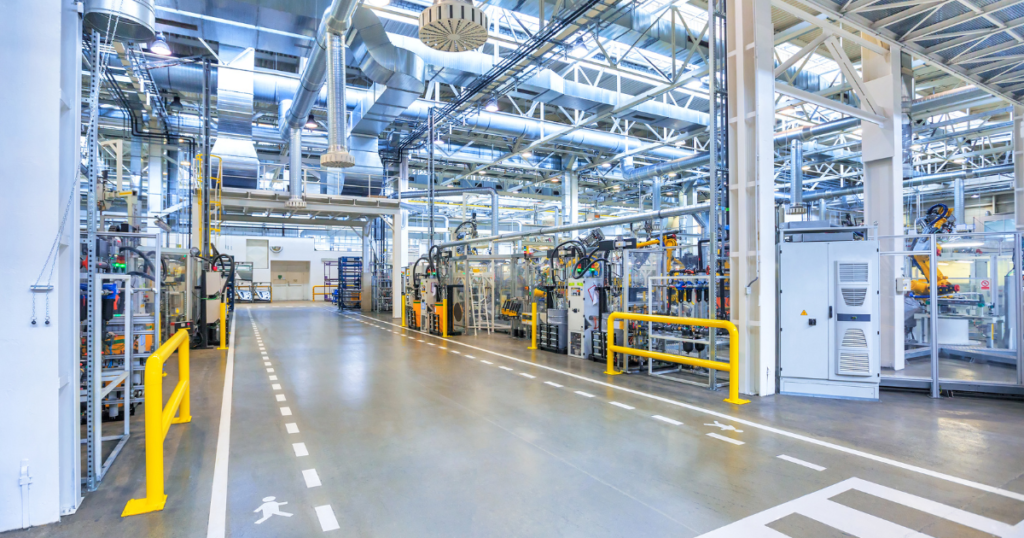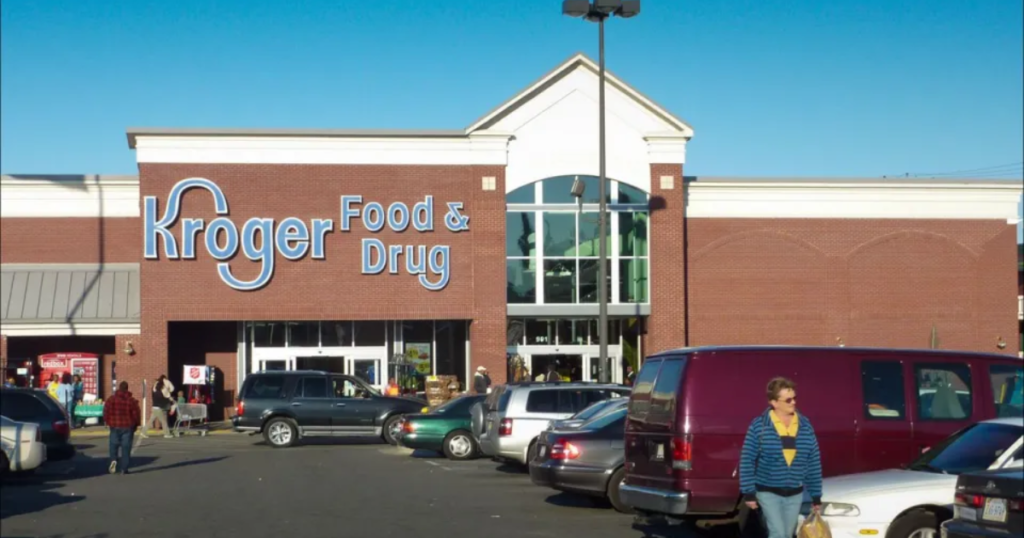With U.S. industrial vacancy rates hitting a 9-year high, the implications are far-reaching. The current landscape presents challenges and opportunities for stakeholders in the commercial real estate sector. Understanding the driving forces behind this surge is crucial for making informed decisions in a rapidly evolving market. As you navigate this environment, exploring the factors influencing these trends and strategies for adaptation will be key to staying ahead of the curve.
Factors Impacting U.S. Industrial Vacancy Rates
The surge in U.S. industrial vacancy rates to a 9-year high is driven by a combination of economic uncertainty, shifts in consumer behavior, and the ongoing global pandemic. Despite this increase, absorption rates saw a significant improvement, with 46.3 million square feet being taken off the market.
It’s noteworthy that the current vacancy rates, at 6.1%, still remain below the 10-year pre-pandemic average of 7%. Additionally, new construction deliveries remained robust, with 121.1 million square feet completed in the second quarter.
As the market stabilizes, experts predict that vacancy rates may peak at 6.7% early next year. This data underscores the impact of external factors on industrial real estate, necessitating a strategic approach to adapt to the evolving landscape effectively.
Adapting to these changes and understanding the market dynamics will be crucial for industry players to navigate through these challenging times successfully.
Shift in Commercial Real Estate Market
Amid the recent surge in U.S. industrial vacancy rates, the commercial real estate market is witnessing a notable shift. The industrial real estate sector has seen vacancy rates hit a 9-year high, increasing by 40 basis points to 6.1%, the highest level in nearly a decade.
Despite this rise, absorption rates have doubled with 46.3 million square feet being taken off the market, reflecting a dynamic market response. It’s worth noting that vacancy rates still remain below the 10-year pre-pandemic average of 7%, indicating a market that’s adjusting to new challenges.
Rent growth has slowed to 3.7% year-over-year nationally, emphasizing the changing landscape within the industrial real estate sector. As businesses navigate through these shifts, strategic planning and adaptation will play a crucial role in leveraging available opportunities and overcoming obstacles in the evolving commercial real estate market.
Impact of Economic Uncertainty
Facing economic uncertainty, businesses in the U.S. industrial sector are adapting to shifting market dynamics. The surge in industrial vacancy rates to a 9-year high of 6.1% in Q2 reflects the impact of economic uncertainty on the industry. However, despite this increase, absorption rates doubled during the same period, indicating a resilient market.
Vacancy rates, although at a high, remain below the 10-year pre-pandemic average of 7%, suggesting a certain level of market stabilization amidst uncertainty. Rent growth has cooled to 3.7% year-over-year nationwide, aligning with the broader economic challenges.
On the construction front, new deliveries remained robust with 121.1 million square feet completed in Q2, showing ongoing investments in the sector despite the prevailing uncertainties. Businesses are strategically navigating through these challenges, emphasizing the need for flexibility and proactive measures to thrive in the current economic climate.
Changes in Consumer Behavior
With a surge in industrial vacancy rates to a 9-year high of 6.1% in the U.S., consumer behavior changes have become a pivotal factor shaping the market dynamics.
The industrial sector is witnessing shifts in demand and supply due to changing consumer preferences influenced by the ongoing pandemic. Despite the increase in vacancy rates, absorption rates have doubled, indicating a healthy market with strong fundamentals.
It’s evident that consumer behavior plays a crucial role in driving occupancy trends within the industrial real estate market. The impact of these changing preferences is reflected in the current vacancy rates, which remain below the pre-pandemic 10-year average of 7%.
As businesses adapt to new consumer demands and behaviors, strategic planning and flexibility will be key in navigating the evolving landscape of the industrial sector.
Understanding and responding to these changing consumer preferences will be essential for businesses to thrive in this dynamic market environment.
Remote Work Adaptation
Changes in consumer behavior have influenced the U.S. industrial market, with remote work adaptation playing a significant role in the current landscape.
The industrial sector saw a 6.1% vacancy rate in Q2, the highest in nine years, as businesses adjusted to remote work trends. Despite this increase, absorption rates doubled in the same period, indicating a healthy market.
Nationwide asking rents rose by 3.7% year-over-year, reflecting the impact of remote work dynamics on industrial properties.
The market is expected to stabilize, with vacancy rates projected to peak at 6.7% early next year. As businesses continue to embrace remote work, the industrial sector is undergoing notable changes.
Strategic planning and adaptation are crucial for businesses operating in this evolving landscape to leverage market opportunities and navigate challenges effectively.
Supply Chain Disruptions
The impact of supply chain disruptions on the U.S. industrial sector is becoming increasingly evident as vacancy rates reach a nine-year high. Despite absorption rates doubling and strong new construction deliveries totaling 121.1 million square feet in Q2, vacancy rates soared to 6.1%. This surge is attributed to ongoing supply chain disruptions and market uncertainties.
However, there’s a silver lining as absorption rates indicate healthy market fundamentals. Although nationwide rent growth has slowed to 3.7% year-over-year, the regional disparities are influencing leasing activities.
Looking ahead, it’s projected that vacancy rates will peak early next year at 6.7% as markets stabilize. This peak will reflect the continued impact of supply chain disruptions on the industrial sector. With speculative projects constituting 84% of new constructions, the industry is adapting to meet evolving needs.
Strategic planning and proactive measures will be crucial for businesses to navigate the challenges posed by supply chain disruptions and the shifting landscape of the industrial real estate market.
Strategic Planning for Industry Adaptation
For effective industry adaptation, you must prioritize strategic planning to navigate the challenges posed by shifting market dynamics.
With U.S. industrial vacancy rates hitting a 9-year high at 6.1% in Q2, it’s crucial to analyze absorption rates, which doubled, indicating a healthy market response. Despite this, rent growth slowed to 3.7% year-over-year, signaling a shift in pricing dynamics that businesses need to consider when planning their strategies.
Moreover, the influx of new construction deliveries totaling 121.1 million square feet in Q2 adds another layer of complexity to the market.
As vacancy rates are projected to peak at 6.7% early next year, businesses must prepare for potential market stabilization and adjust their plans accordingly. Strategic planning will be key in optimizing utilization of available space, negotiating favorable lease terms, and positioning your business for success in a changing industrial landscape.
Final Thoughts
As the U.S. industrial vacancy rates hit a 9-year high, it’s crucial for businesses to focus on strategic planning and adaptability in order to navigate the changing commercial real estate landscape.
With absorption rates doubling and signs of resilience in the market, there’s opportunity for growth and success for those who are able to pivot and adjust to the current challenges.
Stay agile, plan ahead, and embrace change to thrive in this evolving environment.


